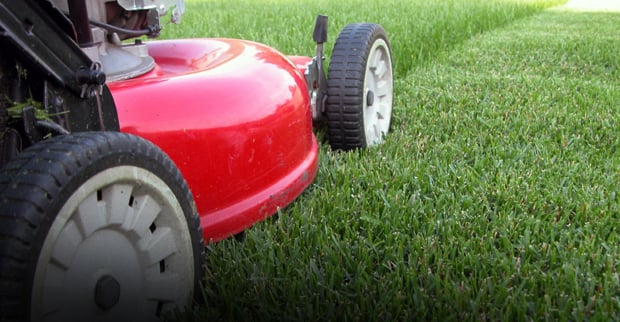Sustainable Development
- Trees
- Ecological Events
- Ecogestures
- Environmental Programs
- The unwanted...
- Environmental Publication
Lawn care and maintenance
In Kirkland, pesticides are prohibited. Here are a few tips to help you maintain your lawn in an eco-friendly and smart way. You will save time and money … while protecting your health, that of your children and your environment!Mowing
- After mowing your lawn, keep grass clippings on the soil for grasscycling, a natural way to fertilize your lawn. In order to speed up the decomposition of the grass clippings, use a mulching lawn-mower or go over the grass clippings with a regular lawn-mower.
- It is important not to cut the grass too short, because it will become more vulnerable to drought and weed invasion. It is preferable to keep your lawn at a height of about 7.5 cm. However, the first mowing in the spring and the last mowing in the fall must be shorter (5 cm).
- It is not advisable to cut wet grass.
Watering
- It is not usually necessary to water your lawn before the month of June. After that, you can do so when you feel the soil is dry.
- In general, a well-maintained lawn will survive summer droughts quite well without having to be irrigated.
- Water your lawn early in the morning or late at night to prevent the water from evaporating too quickly. Under the sun, 20 to 50 % of the water evaporates before even touching the soil.
- Think about reusing rain water for watering your lawn and garden.
Seeding
- Seed or over-seed with different hardy varieties of grasses (fescue, ryegrass or clover) in order to strengthen your lawn and provide ground cover for sparser areas.
- The months of May and the period from mid-August to mid-September are the best times for seeding.
Seasonal maintenance
SPRING
Rake your lawn to remove dead grass and improve water absorption.
Seed the areas that have been damaged in the winter. Start by mowing the grass at a height of 5 cm to stimulate growth.
Use a 100% natural fertilizer.
SUMMER
Mow the lawn at the highest level possible (7.5 cm).
Mow the lawn every two weeks (if possible).
Keep the lawn dormant or water based on dry soil conditions.
END OF SUMMER (mid-August to early September)
Aerate the lawn if soil is too compacted.
Over-seed your lawn, especially if sparse, then cover with a think layer of compost or top soil. Water to help the compost penetrate deep between the grass blades.
Use a 100% natural fall fertilizer.
FALL
Avec la tondeuse, déchiquetez les feuilles mortes. Si la couche de feuilles est trop épaisse, ramassez-les et compostez-les.
Mow the lawn one last time to a height of 5 cm.


For more information
For more information on best eco-friendly practices for maintaining healthy lawn and landscaping, contact the Town eco-counsellor at 514 630-2748 or by email at [email protected] (this service is available from April to October).

